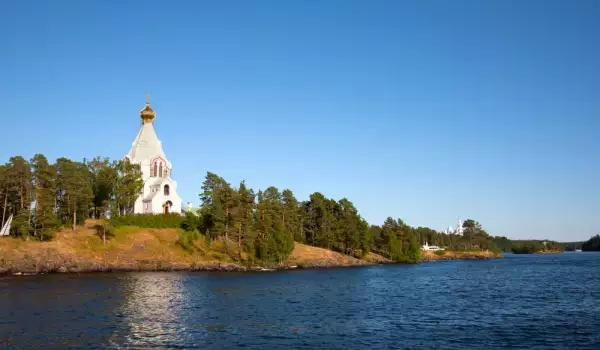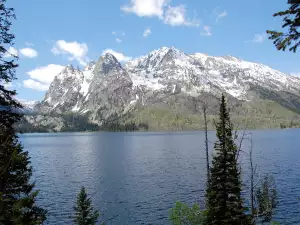Lake Ladoga

Lake Ladoga is located in northwestern Russia. It is the largest lake in Europe and 14th largest in the entire planet. Lake Ladoga is located not far from St. Petersburg, the Republic of Karelia and the Leningrad region, close to the border with Finland. On the side of the Finnish, Ladoga is Laatokka, but was previously known as Nevajärvi and Luadogu. The Neva River departs from Lake Ladoga.
Lake Ladoga is of ice-tectonic origin, being formed after the retreat of the continental glacier, like the lakes of Scandinavia. With a surface area of 18 135 square km, Lake Ladoga is the largest freshwater pool in volume and space. It has many islands with a total area of 460 km, the most famous of which are the Islands of the Valaam archipelago. The average and maximum depth of the lake are 51 and 230 m, respectively. The length of the pool of water from north to south is estimated at 219 km, having an average width of 83 km.
The average water volume of Lake Ladoga is 837 cubic km, but earlier, it was 908 cubic km. Ladoga, along with with Lake Tahoe in United States, according to the results of a NASA climate change study, associated with global warming, is a whole 2.2 degrees (Tahoe 1.7 degrees) warmer than 25 years ago. Lake Ladoga is located at 4-5 meters altitude, and it has nearly 660 islands. Most of them, including Valaam, Kilpola and Konevets are located in the northwestern part of Ladoga.
Lake Ladoga is separated from the Baltic Sea through the Isthmus of Karelia and flows through the Gulf to the Neva River. The whole lake is navigable, it is part of the waterway between the Volga and the Baltic Sea. The pool of Lake Ladoga includes about 50, 000 lakes and 3, 500 rivers, longer than 10 km. The catchment area of Lake Ladoga is 276 000 square km. About 85% of its flow is provided by the River Svir, draining Lake Onega, Volkhov River, coming from Lake Ilmen, Vuoksi River, flowing from the Finnish Lake Saimaa and the drainage of many Finnish lakes.

Lake Ladoga is rich in fish, with about 48 species living in it. On its shores, where the Neva River is, it has a tremendous wealth of forests, but processing plants for timber are built there, which pollute the waters of the lake. Lake Ladoga historically played a crucial role, especially during wars.
"The road of Life" is the path on the frozen Lake Ladoga, which remained the only connection with the outside world, during the siege of Leningrad. During the war, the road was known as the "Road of Death", but its official name is "Military Road route 101". Delivery of supplies and ammunition was performed with a truck on the ice of the lake in winter and boats in summer. At the request of Stalin, the U.S. and Britain begun deliveries of military equipment and supplies for the beleaguered Russian cities.
In 1941, 40 Allied convoys of 800 ships deliver 22, 000 tanks, 12 000 aircraft and food supplies from Iceland to Murmansk in the North Sea. 81 ships were sunk by German submarines, but the convoys were vital to the survival of the besieged cities. Despite the difficulties on the "Road of Life" and the attacks of German planes and submarines, 360, 000 tons food and ammunition were shipped.
The historic Russian capital Staraya Ladoga gets its name from the name of the lake. Among the landmarks that can now be seen in Lake Ladoga is the Oreshek Fortress, a small island located at the end of the Neva. This medieval castle with the close- by historic center Shlisselburg are included in the UNESCO list of World Heritage SItes.
On the largest island in Ladoga, can be seen the Balaam medieval monastery, founded in the 14th century. In 1611, the monastery was abandoned because of frequent raids by the Swedish. It was restored in 1715 by decree of Tsar Peter I.















